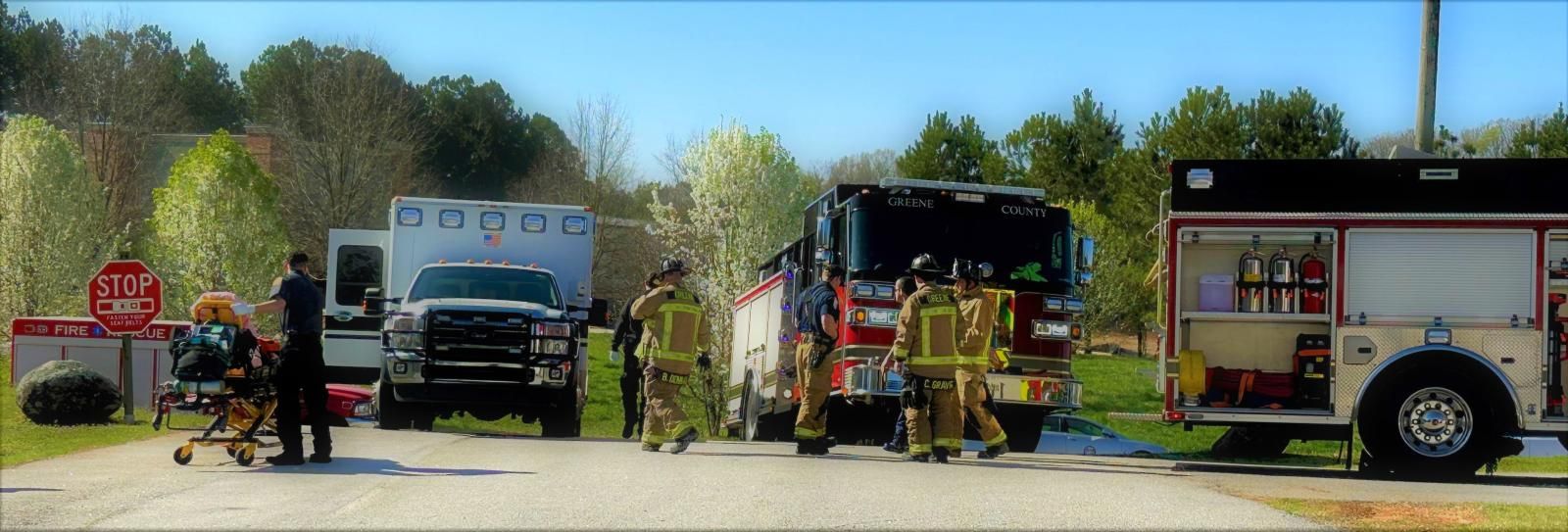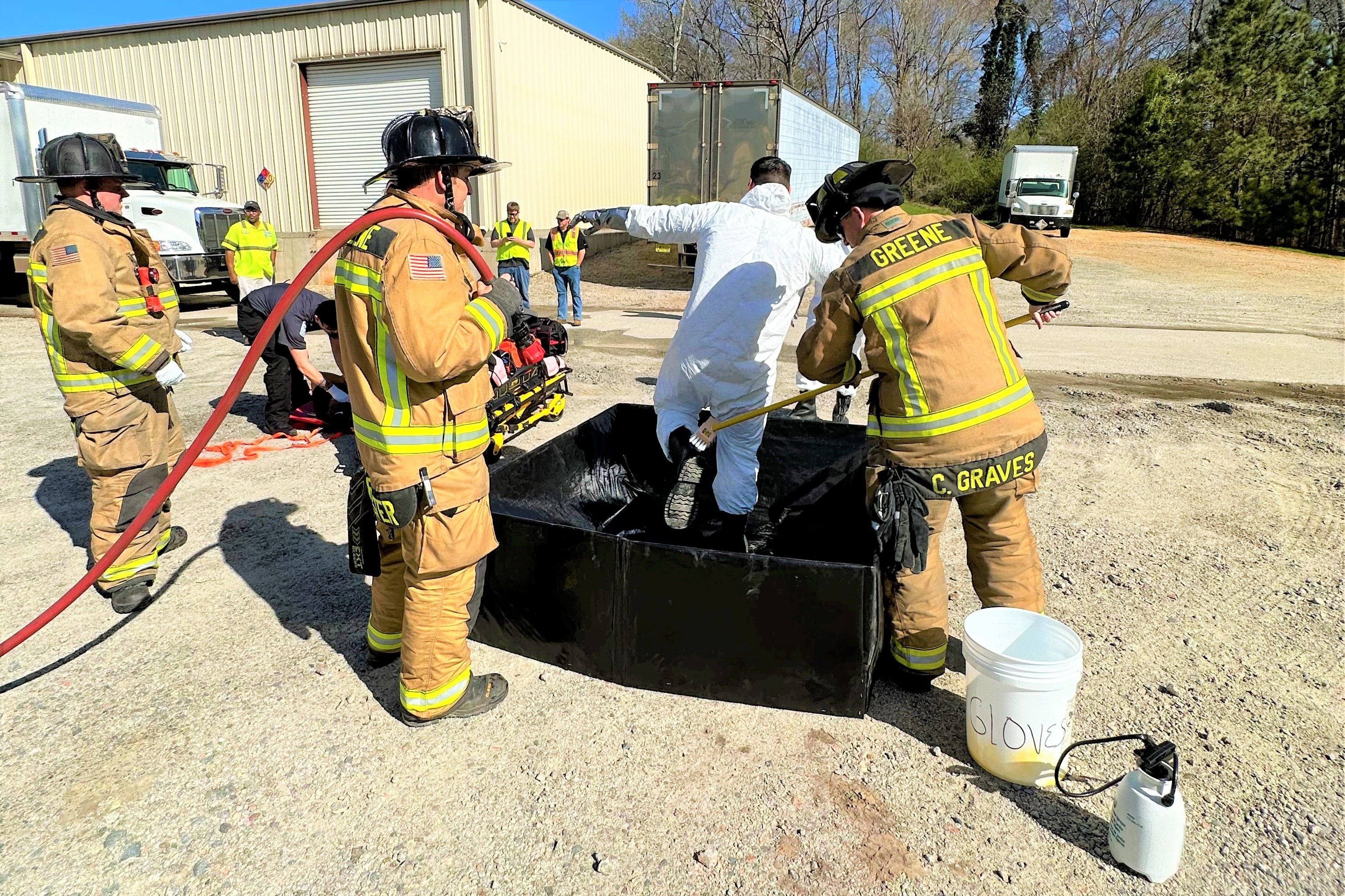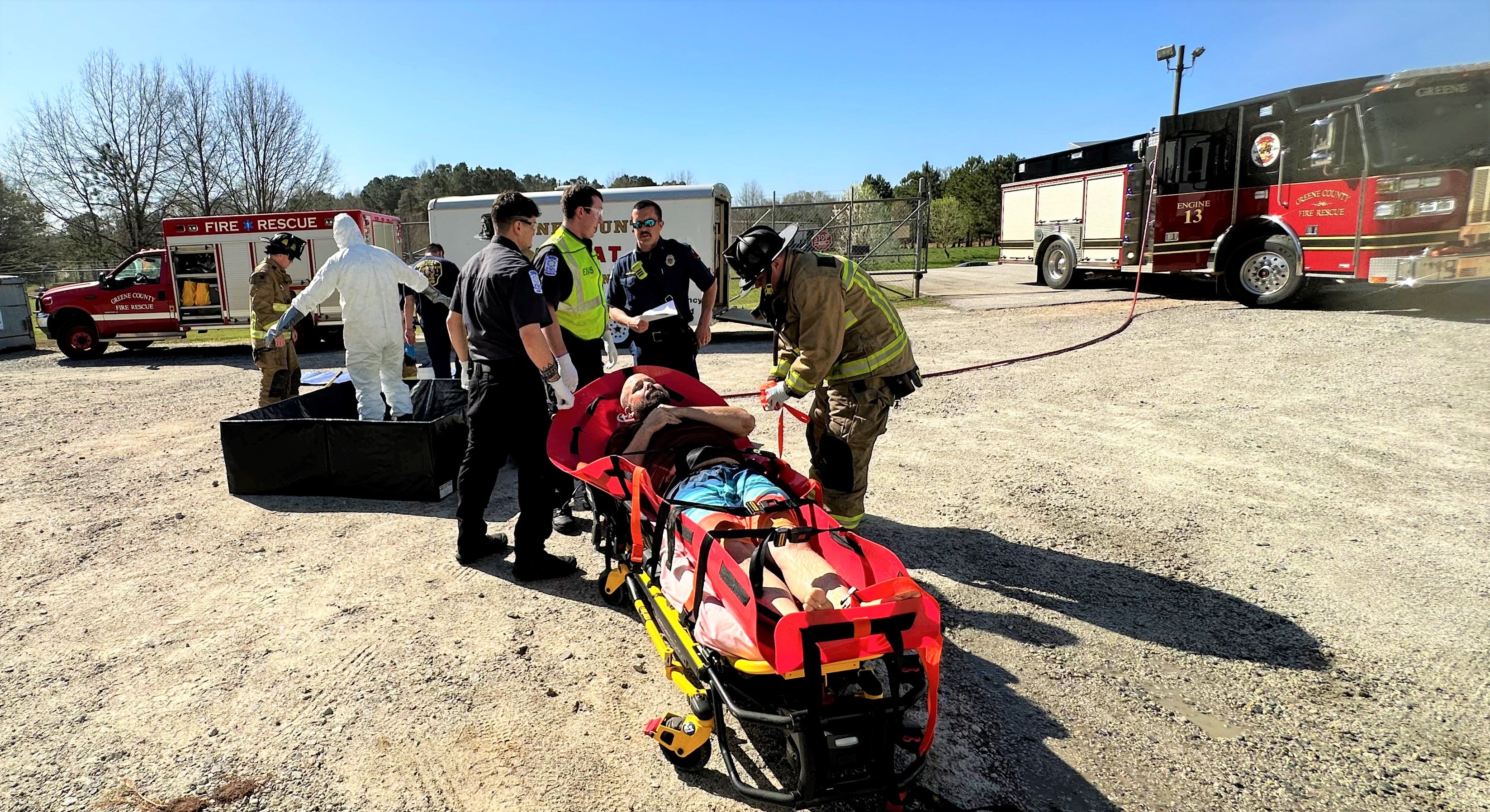
Exercising emergency responses with hands-on experience
The team at Nutrien Ag Solutions location in Greensboro, Georgia held a hands-on training exercise in collaboration with their city’s fire department, hazardous materials (HAZMAT) team, county Emergency Medical Staff (EMS), and Good Samaritan Hospital. The exercise was a chance for these teams to train together to practice their response to an emergency in the agriculture industry or similar industries in their community dealing with chemical materials. Engaging in safety programs and practices like this are a great example of The Nutrien Way in action and help bring our Culture of Care to life.

“You can sit in a classroom all day and think about what you’re going to do, but you can’t replace physically responding to a situation. It’s a lot different when you get to use your own hands, that physical action stimulates things in your mind that you can’t get out of a classroom,” says Bryan Grebel, Safety, Health, and Environment (SH&E) Advisor for the South Region.
Greene County’s Public Safety Department, including the fire department, EMS, and Emergency Management Agency (EMA), took the lead on organizing the exercise for the local organizations, coordinating with Jason at the Greensboro facility.
Setting the scene for the day
Going into the day of the exercise, only a handful of folks in Greensboro knew the full scenario that would play out during the training. 911 dispatchers were told that an “emergency” call would be placed from the branch and were aware that the call was part of the exercise, and an ambulance was ready to transport the victim – an employee volunteer who would be the star of the day’s response.
“Outside of knowing that this was a training exercise, it was pretty much a real-life scenario for all of the teams involved,” says Jason Cranford, Manager of the Greensboro Facility.

The scenario for the exercise was that a chemical tote was leaking and the employee responding to the leak was Diabetic. The employee experienced low blood sugar and passed out. The employees at the branch found the situation and placed a call to 911. First to arrive was the fire department.
The firefighters came into the branch and examined the situation, determining that they needed a HAZMAT team to respond to the chemical leak and an EMS to respond to the employee’s medical emergency. From there, the teams talked through how to retrieve the employee with the ongoing chemical leak and get him safely out of the area.
Next to arrive was the ambulance that would transport the volunteer victim to Good Samaritan Hospital. Once the team arrived at the hospital, they got to witness the victim being admitted to the hospital, being examined, and the hospital staff explained how they would treat a patient in this situation.
After visiting the hospital, the team traveled back to the branch to have a session with the HAZMAT team to go over ways to properly plug a leaking chemical tote once any victims are removed from the area.
“When situations like this do happen, these trainings prepare everybody for the worst-case scenario. When you’re in that situation, time is everything. The difference between someone living or not could be 20 minutes, and training weeds out the deficiencies that may cause those 20 minutes,” says Bryan. “These trainings improve efficiency to a point when minutes and seconds count, it eliminates those gaps that you may have in a real-life situation if you weren’t trained for them.”
Partnering to better the community
Jason has worked closely with Greensboro’s fire department and director of emergency services, Joe Bashore, for 20 years and had organized Nutrien-led training exercises in the past. Last year, a tractor trailer caught fire on the local interstate. The Fire Chief at the time called Jason for advice on how to properly handle distinguishing the fire since the tractor was carrying an herbicide that contained glufosinate.
“We have held smaller drills in the past with Jason and Nutrien Ag Solutions in Greensboro, but the most recent drill was by far the most inclusive and detailed training we have had,” says Joe Bashore, EMA/Public Safety Director for Greene County. “The success of this drill was through the collaborative effort of the multiple agencies involved, creating resource partnerships and working together will build a better foundation for future training and preparedness for actual events.”
When a new Fire Chief came to the department, Jason proposed doing a training where the fire department would organize the training and Jason’s team could serve as advisors over the situation from an agriculture point of view. The goal of the training was to get the emergency crews more familiar with training to respond to situations where agriculture products and practices are involved.
“This was a great opportunity for Greene County Public Safety (Fire/EMS/EMA), St. Mary’s Good Samaritan Hospital, and Nutrien Ag Solutions to work together in training to prepare before the emergency. All responders responded and ran the drill in real time to give the crew's actual incident stress. Hazardous material incidents can be very stressful, and this gave all our personnel the experience of a real incident,” says Rodney Wiggins, Fire Chief for Greene County Fire Rescue. “These partnerships with external stakeholders, like Nutrien Ag Solutions, Inc. are priceless, and I encourage all facilities to work with their public safety partners to be better prepared with relationships and operational concerns before the incident.”
As for how Bryan and Jason hope to grow their emergency response training exercises? They hope to have the local medical air evacuation team involved – although it will lead to the two having to flip a coin to play the victim in the day’s scenario.
“If your local branch or office doesn’t have a relationship with your fire department and emergency response teams where you can learn and develop safety responses together, then you need to develop that and start researching out to provide these types of training for the emergency services in your area,” says Jason. “Not only do your employees get hands-on training, but the response teams experienced different scenarios that they’re not used to. The more training anybody has in unfamiliar situations, the better off we are as a community and as a company.”
Related stories


